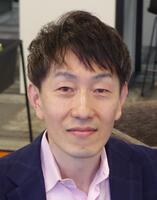Research Experience
-
2023.04-Now
Waseda University Faculty of Science and Engineering, CELESE
-
2021.04-2023.03
Yokohama National University College of Education
-
2019.10-2023.03
Tokyo Gakugei University
-
2017.04-2021.03
Yokohama National University College of Education
-
2015.04-2017.03
Shiga University
-
2014.04-2015.03
Shiga University
-
2012.04-2014.03
University of Tokyo
-
2011.04-2012.03
Keio University
-
2010.04-2011.03
Keio University
-
2005.04-2010.03
Tokyo Metropolitan University
-
2005.04-2010.03
Japan Science and Technology Agency Research Institute of Science and Technology for Society


Click to view the Scopus page. The data was downloaded from Scopus API in December 05, 2025, via http://api.elsevier.com and http://www.scopus.com .